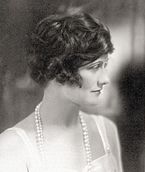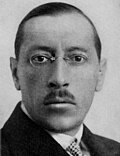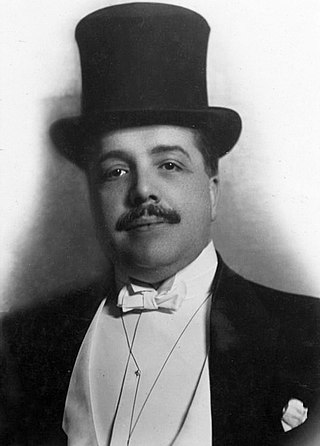
Sergei Pavlovich Diaghilev, also known as Serge Diaghilev, was a Russian art critic, patron, ballet impresario and founder of the Ballets Russes, from which many famous dancers and choreographers would arise.

Igor Fyodorovich Stravinsky was a Russian composer and conductor with French citizenship and American citizenship. He is widely considered one of the most important and influential composers of the 20th century and a pivotal figure in modernist music.

Vaslav or Vatslav Nijinsky was a Russian ballet dancer and choreographer of Polish ancestry. He is regarded as the greatest male dancer of the early 20th century.

The Rite of Spring is a ballet and orchestral concert work by the Russian composer Igor Stravinsky. It was written for the 1913 Paris season of Sergei Diaghilev's Ballets Russes company; the original choreography was by Vaslav Nijinsky with stage designs and costumes by Nicholas Roerich. When first performed at the Théâtre des Champs-Élysées on 29 May 1913, the avant-garde nature of the music and choreography caused a sensation. Many have called the first-night reaction a "riot" or "near-riot", though this wording did not come about until reviews of later performances in 1924, over a decade later. Although designed as a work for the stage, with specific passages accompanying characters and action, the music achieved equal if not greater recognition as a concert piece and is widely considered to be one of the most influential musical works of the 20th century.
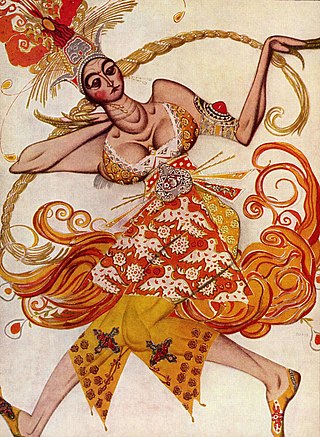
The Firebird is a ballet and orchestral concert work by the Russian composer Igor Stravinsky. It was written for the 1910 Paris season of Sergei Diaghilev's Ballets Russes company; the original choreography was by Michel Fokine, who collaborated with Alexandre Benois and others on a scenario based on the Russian fairy tales of the Firebird and the blessing and curse it possesses for its owner. It was first performed at the Opéra de Paris on 25 June 1910 and was an immediate success, catapulting Stravinsky to international fame and leading to future Diaghilev–Stravinsky collaborations including Petrushka (1911) and The Rite of Spring (1913).

The Théâtre des Champs-Élysées is an entertainment venue standing at 15 avenue Montaigne in Paris. It is situated near Avenue des Champs-Élysées, from which it takes its name. Its eponymous main hall may seat up to 1,905 people, while the smaller Comédie and Studio des Champs-Élysées above the latter may seat 601 and 230 people respectively.
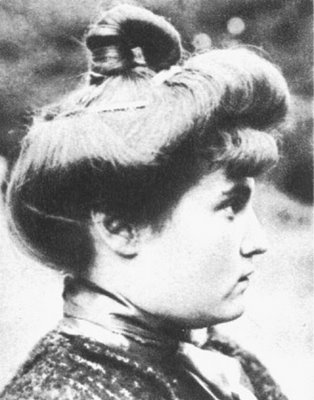
Misia Sert was known primarily as a patron of contemporary artists and musicians during the decades she hosted salons in her homes in Paris. Born in the Russian Empire and of Belgian, French and Polish descent, she became a professional pianist and gave her first public concert in 1892. She was a patron and friend of numerous artists, for whom she regularly posed, appearing on magazine covers and posters. Her salons were frequented by contemporary writers and musicians played their newest works.
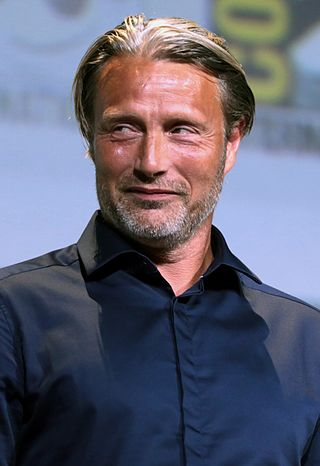
Mads Dittmann Mikkelsen is a Danish actor, former gymnast and dancer. He rose to fame in Denmark as an actor for his roles such as Tonny in the first two films of the Pusher film trilogy, Detective Sergeant Allan Fischer in the television series Rejseholdet (2000–2004), Niels in Open Hearts (2002), Svend in The Green Butchers (2003), Ivan in Adam's Apples (2005) and Jacob Petersen in After the Wedding (2006).

Jan Kounen is a Netherlands-born French film director and producer.
The Wedding, or Svadebka (Russian: Свадебка), is a Russian-language ballet-cantata by Igor Stravinsky scored unusually for four vocal soloists, chorus, percussion and four pianos. Dedicating the work to impresario Sergei Diaghilev, the composer described it in French as "choreographed Russian scenes with singing and music" [sic], and it remains known by its French name of Les noces despite being Russian.

Anna Mouglalis is a French actress and model. She is known for being a house ambassador for Chanel since 2002, and for portraying the fashion designer Coco Chanel in the 2009 film Coco Chanel & Igor Stravinsky, and actress Paula Maxa in the 2018 film The Most Assassinated Woman in the World.

Arthur Edward Capel CBE, known as Boy Capel, was an English polo player, possibly best-remembered for being a lover and muse of fashion designer Coco Chanel.

The Ballets Russes was an itinerant ballet company begun in Paris that performed between 1909 and 1929 throughout Europe and on tours to North and South America. The company never performed in Russia, where the Revolution disrupted society. After its initial Paris season, the company had no formal ties there.

Trois mouvements de Petrouchka or Three Movements from Petrushka is an arrangement for piano of music from the ballet Petrushka by the composer Igor Stravinsky for the pianist Arthur Rubinstein.
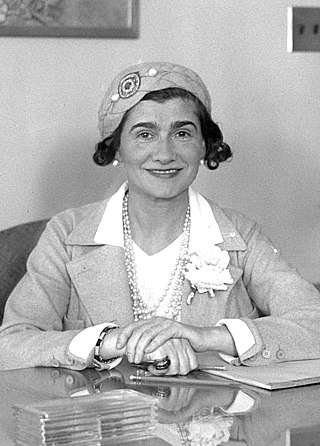
Gabrielle Bonheur "Coco" Chanel was a French fashion designer and businesswoman. The founder and namesake of the Chanel brand, she was credited in the post-World War I era with popularising a sporty, casual chic as the feminine standard of style. She is the only fashion designer listed on Time magazine's list of the 100 most influential people of the 20th century. A prolific fashion creator, Chanel extended her influence beyond couture clothing into jewellery, handbags, and fragrance. Her signature scent, Chanel No. 5, has become an iconic product, and Chanel herself designed her famed interlocked-CC monogram, which has been in use since the 1920s.

Nijinsky is a 1980 American biographical film directed by Herbert Ross. Hugh Wheeler wrote a screenplay that explores the later life and career of Vaslav Nijinsky; it was based largely on the premier danseur's personal diaries, and her 1934 biography of Nijinsky, largely ghostwritten by Lincoln Kirstein, who later co-founded the New York City Ballet.
Chris Greenhalgh is a British novelist, screenwriter, teacher and poet.
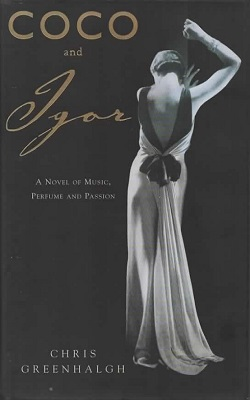
Coco and Igor is a 2002 novel by Chris Greenhalgh. Set mainly in Paris in 1920, it is based on a possible real-life affair between Coco Chanel and Igor Stravinsky.
This is a sound and video discography of Igor Stravinsky's ballet The Rite of Spring. The work was premiered in Paris on May 29, 1913 at the Théâtre des Champs-Élysées. It was presented by Sergei Diaghilev's Ballets Russes with choreography by Vaslav Nijinsky and was conducted by Pierre Monteux. The list includes many of the most noted recordings of the work but is by no means exhaustive. The avant-garde character of the music, combined with Nijinsky's innovative choreography, caused a near riot at the first performance. It has since gained wide acceptance both as a ballet and as a concert piece.

Marek Tomaszewski is a Polish pianist. He was one half of the pianist duo Marek and Wacek with Wacław Kisielewski from 1963 until his death on 12 July 1986. He is the father of French music video director David Tomaszewski.

